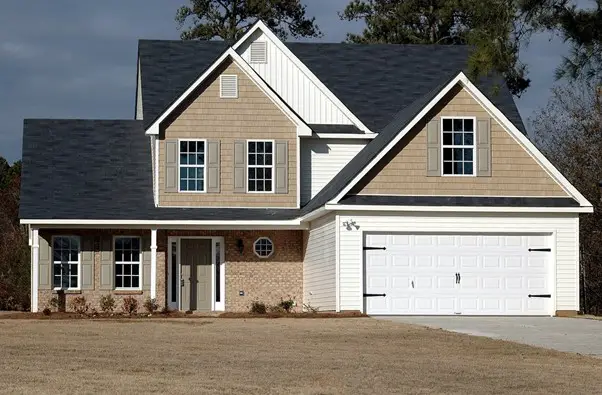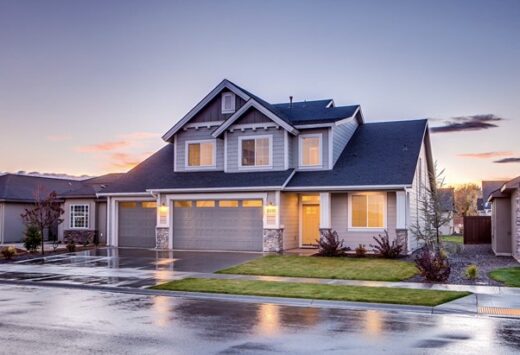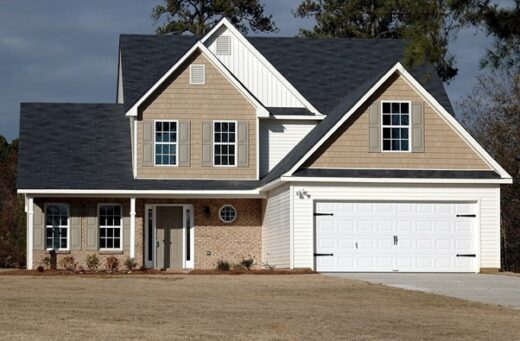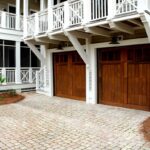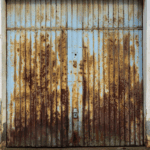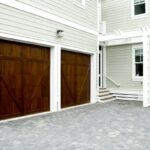Garage door mechanisms: torsion and extension springs. What to choose?, Property car space advice, House tips
Garage Door Mechanisms: Torsion and Extension Springs. What to Choose?
27 July 2022
Sectional doors are appreciated for their functionality and compactness: they do not require additional space for use, for the opening and closing cycle, as well as for holding the structure – springs are responsible for this. Two types of garage doors are used: tension and torsion. Let’s figure out which mechanism to choose if you decide to replace your garage door in your home.
Why Are Springs Needed?
Depending on the size and material, the door leaf can weigh from 90 to 150 kg. Such a large weight cannot be lifted easily by hand. To solve this issue with residential garage door replacement, a balancing system was created. The garage door is lowered and raised due to the counterweight – this function is assigned to the springs. The element is stretched or compressed, which in turn causes the panels to move.
Torsion Element
The principle of operation is based on spiral twisting. The spring is located on a metal shaft that rotates the actuator. At the moment of closing, the spring receives tension, and the accumulated energy prevents the web from tearing off the fasteners. When opening, energy is released, setting the desired vector of movement of the gate leaf.
The shaft is horizontally fixed to torsion bars. It is optimal if it is possible to install it indoors, above the opening.
An important advantage of the module is its resistance to high loads. Torsion bars successfully cope with a weight of more than 300 kg. Advantages of torsion bars:
- Suitable for large and heavy structures.
- Increased service life (up to 100 thousand cycles versus 25 thousand cycles for extension springs).
- If the mechanism fails, the ratchet clutch blocks the movement of the leaf, so the sash cannot fall on a person or machine.
Disadvantages of the mechanism:
- There is a limitation on the distance from the beginning of the canvas to the ceiling (at least 210 mm in household models).
- The system is demanding on the evenness of the wall panel, pre-tensioning of the torsion bar is necessary.
- The price is higher in comparison with analogue.
Tension Springs
Such modules function due to the elasticity of the metal. They stretch with closing force and contract when lifted. The elements are arranged vertically (less often, horizontally) and in pairs, on both sides of the sash. When the gate is closed, the springs are in a state of accumulation of energy. This allows you to raise the sash at any time without much effort.
The modules are connected to the gate by a cable. If one of the elements fails, the load falls on the second.
The advantages of such a system:
- Affordable price;
- Easy installation;
- Adjustment or replacement is carried out every 2 years;
- Small mounting space (100-125 mm);
- Compatible with manual and electric drive.
Disadvantages of tension springs:
- Closing a mechanical structure requires physical effort – the heavier the gate the greater it is.
- For massive gates, the number of springs increases.
- They are used only in structures with low intensity of operation (about five cycles per day).
- After some time, they stretch along the length and lose their elasticity.
- Fine adjustment is required to compensate for stretch. If the setting is not correct, the spring may break, causing the blade to suddenly fall.
Comparison of Features of Both Mechanisms
- Price and operation:
- Installing, maintaining and adjusting torsion bars will cost more than tension systems. However, torsion models are easier adjusted, which allows you to upgrade the system without replacing parts. The service life of the torsion model is higher. It is designed for a more intense load, capable of lifting heavy structures on an ongoing basis.
- Tension balancing is a cheaper system, but in the process of adjusting them, it is often a question of replacement rather than repair or adjustment. During maintenance, some springs can still be stretched, but it is more economical to replace them with new ones.
- Safety:
- For tension elements, a similar backup spring is provided. It is located inside the main one and, if it fails, takes on the load.
- In torsion springs, a ratchet mechanism plays the role of an insurance element.
- Installation:
- Tension springs do not require special conditions for installation, so the installation can be carried out by a person with minimum experience.
- Mounting the torsion bar requires horizontal surfaces. If there is a curvature on the wall, the operation of the mechanism will be disrupted, and the door leaf will get stuck.
Thus, tension and torsion doors are almost equivalent in terms of technical resources, operating time, and reliability.
Comments on this guide to Garage Door Mechanisms: Torsion and Extension Springs article are welcome.
Garage Doors
Garage Door Posts
Boost your curb appeal with 3 kinds of garage doors

How to design perfect garage door for your home
4 signs prove you need to install garage door
Top facts to note about garage door repair
How do you fix a garage door that won’t open?
Choose the Right Garage Door services
Top 8 Common Garage Door Problems
Garages
Garage Articles
5 Car Garage design ideas guide
5 DIY ideas to maximize garage storage spaces
Smart Ways To Use Your Garage Space Efficiently
Building
Residential Architecture Articles
Comments / photos for the Garage Door Mechanisms: Torsion and Extension Springs page welcome

